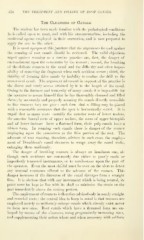Page 458 - My FlipBook
P. 458
456 THE TREATMENT AND FILLING OF ROOT CANALS.
The Cleansing of Canals.
The student has been made familiar with the pathological conditions
he is called upon to treat, and with his armamentarium, including the
medicinal agents employed in their correction, and is now prepared to
apply the one to the other.
It is most apropos at this juncture that the arguments for and against
the reaming of root canals should be reviewed. The valid objections
urged against reaming as a routine practice are, iirst, the danger of
encroachment upon the cementum by the reamer ; second, the l)reaking
of the delicate reamers in the canal and the difficulty and often impos-
sibility of removing the fragment when such accident occurs ; third, the
liability of forming false canals by inability to confine the drill to the
anatomical canal. The argument advanced in support of the practice is
the direct and ready access attained by it to the length of the canal.
Owing to the fineness and tortuosity of many canals it is impossible for
the operator to assure himself that he has thoroughly cleansed and filled
them ; by accurately and properly reaming the canals directly accessible
to fine reamers they are given such form that a filling may be placed
with a reasonable assurance that the apex is hermetically sealed. It is
urged that as many roots—notably the anterior roots of lower molars,
the anterior buccal roots of upper molars, the roots of upper bicuspids
and of lower incisors—have a flattened form, their pulp canals have a
ribbon form. In reaming such canals there is danger of the reamer
impinging upon the cementum at the thin portion of the root. The
advocate of root reaming, therefore, advises in such cases the employ-
ment of Donaldson's canal cleansers to scrape away the canal walls,
enlarging them uniformly.
The danger of breaking reamers is always an imminent one, al-
though such accidents are commonly due either to poorly made or
imperfectly tempered instruments, or to carelessness upon the part of
the operator. Even the most skilful must be ever on the alert to detect
any unusual resistance oifered to the advance of the reamer. This
danger increases if the direction of the canal diverges from a straight
line. It is obvious that with any instrument which is being rotated, its
point must be kept in line with its shaft to minimize the strain on the
part immediately above the cutting portion.
The employment of reamers is therefore advised only in nearly straight
and rounded roots ; the central idea to keep in mind is that reamers are
employed merely to uniformly enlarge canals which already exist, never
to form new ones. Root canals which have a flattened form are en-
larged by means of the cleansers, using progressively increasing sizes,
and supplementing their action where and when necessary with sulfuric


